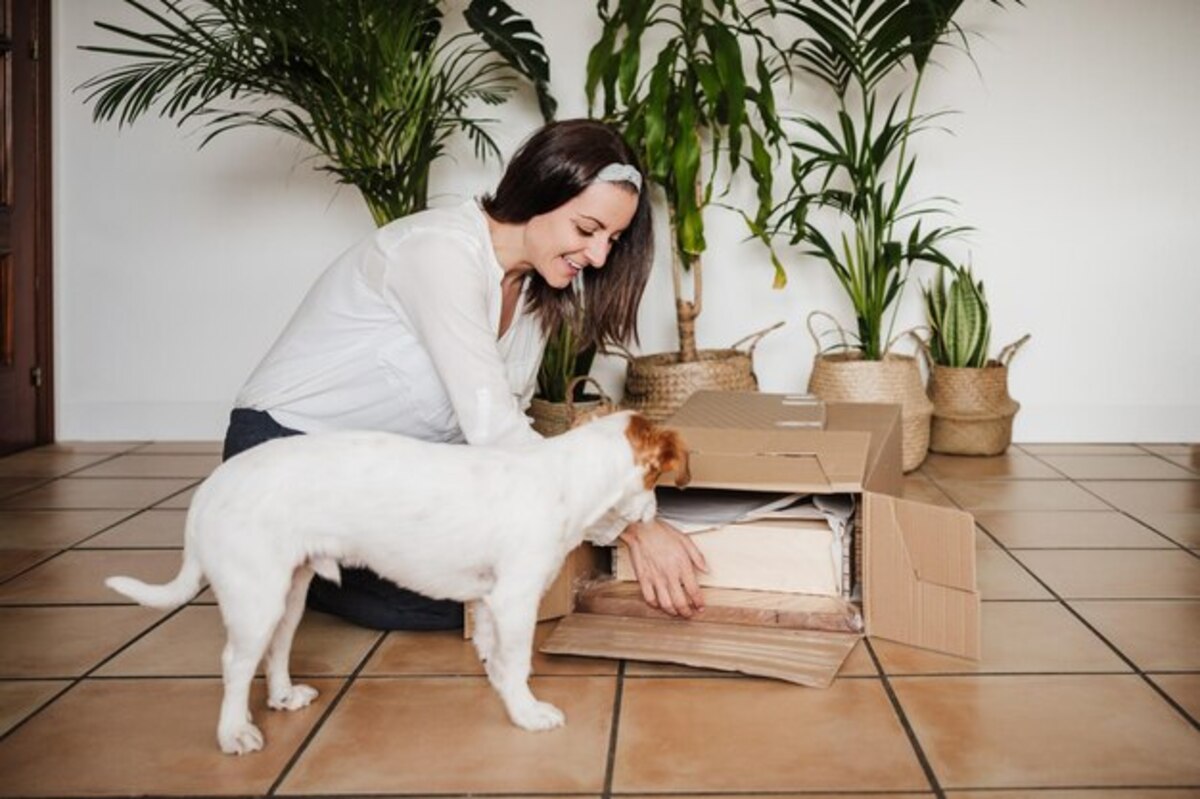How to prepare your pets for a hassle-free move

Preparing your pets for a move can be a challenge, but with the right steps, you can ensure that the transition is as smooth as possible. In this article, I will provide practical tips and effective strategies to help your furry companion adjust seamlessly to their new home. From advance planning to the arrival at the new space, every detail matters to minimize stress for both you and them. Keep reading to find out how to make this experience a positive one!
1. Assess the emotional impact on your pet.
Before carrying out the moving process, it is essential to assess the emotional impact it will have on your pet. Animals can be very sensitive to changes in their environment, and a move can cause them anxiety or stress. Observe how your furry companion reacts to new situations, such as the arrival of boxes or the reorganization of space. Pay attention to their usual behaviors: if you notice they are more restless, tend to hide, or show signs of aggression, they may need a little more support during this period.
An effective way to help your pet cope with this transition is to create a safe and familiar environment during the preparations. Keep their favorite items, like toys and blankets, within reach so they can feel comfortable amid the chaos. If possible, make prior visits to the new house so your pet can explore and familiarize themselves with the new surroundings before the big day. Remember that each animal is unique and has its own pace for adapting; therefore, give them time and patience as they adjust to their new home.
Prepare an essential kit for your animals.
Preparing an essential kit for your animals is a crucial step in the moving process. This kit should include all the necessary items to ensure your pet feels safe and comfortable during the transition. Start by gathering their regular food, enough for at least a week, along with their food and water bowls. Don't forget to include their favorite bed or blanket, as well as some toys that provide familiarity and comfort. Having these items on hand will not only help your pet adjust more quickly to their new environment but will also reduce the stress associated with the change.
In addition to the basic items, consider adding some additional elements to the kit that may be useful in case of emergency. Include a copy of their veterinary records, as well as any medication they are taking. It is also advisable to have an updated identification collar and a sturdy leash for walks in their new area. If your pet has a microchip, make sure the information is updated with your new address. A well-prepared kit will ensure that both you and your furry friend are ready for the unexpected and will help make the move much smoother and more organized.
3. Maintain a consistent routine during the move.
Maintaining a consistent routine during the move is essential to help your pet adjust to the change. Animals, especially dogs and cats, thrive in predictable and familiar environments. Before the move, try to keep regular schedules for meals, walks, and playtime. This not only provides them with a sense of security but also helps reduce their anxiety by showing that some things in their lives remain the same despite the impending change. Reinforcing these routines during the moving process will be crucial; try to continue feeding and taking your pet out at the same usual times.
Additionally, make sure to create a calm and familiar space for your pet amidst the chaos of the move. If possible, designate a specific area where they can feel safe and comfortable while you pack or receive the workers helping with the move. Filling this space with their favorite toys, blankets, or even an article of your clothing can provide them with significant emotional relief. Staying close to their usual environment will remind them that everything will be okay and facilitate the adjustment process to the new home. At the end of the day, the most important thing is to remember that your pet is watching your reactions; if you stay calm and follow a consistent routine, they will feel more at ease with this new phase.
4. Make pre-move visits to the new home.
Making prior visits to the new home is a key strategy to facilitate your pets' adjustment to their new environment. Before the move, try to take your dog or cat to the new house at least a couple of times. This will allow them to become familiar with the space and explore the surroundings in a less stressful environment. If possible, let them sniff every corner, as this will help them feel more comfortable when the time for the actual move arrives. Observe their reactions; if they seem anxious or uncomfortable, reinforce their confidence by giving them treats or petting them during the visit.
Also, consider making this visit at different times of the day so that your pet can adapt not only to the physical space but also to the new sounds and smells they will encounter in their daily life. If you have other animals, make sure to bring them along so they can socialize and get used to each other in this new setting. By minimizing the shock of a sudden change in their usual routine and allowing them to become familiar with their future home in advance, you will be helping to reduce the stress associated with the move and fostering a smoother transition to their new life with you.
5. Create a safe space in the new environment.
Creating a safe space in the new environment is essential to help your pet adjust during and after the move. Once you arrive at your new home, designate a specific area where your companion can feel comfortable and protected. This space should be away from the hustle and bustle of boxes and the constant movement of people. Place their bed, some familiar toys, and, if possible, a clothing item with your scent so they feel calmer. This will serve as their personal refuge where they can retreat when they need a moment of peace.
In addition to setting up this cozy corner, make sure everything is secured and free of potential hazards. Check for exposed wires, sharp objects, or toxic substances within reach of your pet. If you have a cat or dog that tends to explore, consider using temporary barriers to limit their access to certain areas while you are handling the installation process at home. Also, remember to keep essential items like food, water, and their basic supplies nearby to help them adjust to the new environment without causing additional stress. This way, you will create a safe and familiar environment that will allow them to adjust their behavior in this new stage.
6. Use appropriate and comfortable carriers.
When it comes to moving, choosing the right carrier for your pets is essential to ensure their comfort and safety. Make sure the carrier is spacious enough, allowing your pet to sit, lie down, and turn around easily. Opt for well-ventilated models made of sturdy materials, as this not only provides a comfortable environment but also protects your furry companion during the journey. Additionally, if possible, familiarize your pet with the carrier before the move; let them explore and spend time inside it at home to reduce their anxiety on moving day. It is equally important to consider the type of transportation you will use for the move. If you are traveling by car, make sure the carrier is secured properly to avoid sudden movements. If you are using a moving service or airplane, check the specific regulations regarding pet transportation and choose a reliable company that has experience in this type of transfer. Remember to include familiar items such as their blanket or favorite toy inside the carrier; this can help calm their nerves and make the journey more manageable. With careful planning and the right equipment, you can facilitate a smoother transition to their new home.
7. Consult the veterinarian about sedatives or additional advice.
When it comes to moving, it is essential to consider the emotional and physical well-being of our pets. If you have followed the previous steps and are still concerned about their reactions during this process, do not hesitate to consult your veterinarian. They can provide valuable information about specific sedatives that may help calm your animals if they are particularly anxious or fearful of drastic changes in their environment. Additionally, the veterinarian can assess your pet's overall health and suggest additional strategies tailored to their needs. In addition to sedatives, your veterinarian can also offer advice on how to make the transition easier for your pet. This may include recommendations on the use of synthetic pheromones, training techniques to reduce anxiety, or even guidelines on how to establish a safe space in the new home where your furry companion can feel comfortable while adjusting to their new routine. Remember that each animal is unique, so having the right professional guidance can make a significant difference in their experience during this period of change.
Open communication with your veterinarian will not only help you as an owner but will also ensure that your pets receive the necessary care and support to face this new adventure smoothly. This way, you can enjoy the moving process knowing that you are doing the best for them.
8. Gradual introduction to new areas and neighbors
Once you have arrived at your new home, it is essential to gradually introduce your pets to the new areas and neighbors. Start by providing a safe space where they can explore without feeling overwhelmed. You can choose a quiet and familiar room for them, equipped with their personal items, such as their bed, toys, and food. This will give them a refuge where they can adjust to the new environment without the pressure of full exploration. As they become more comfortable, you can slowly open doors to other areas of the home, allowing them to get used to each corner in their own time. In addition to exploring the interior of the home, it is important to consider socialization with the new neighbors and other animals in the area. If you have a dog, organize short walks around the neighborhood so it can get to know the smells and sounds of the surroundings. This will not only help them familiarize themselves with their new habitat, but it will also allow them to safely establish connections with other nearby dogs or pets. Remember to be patient; each pet has its own pace for adapting to significant changes in its life. With love and attention, you can help them create a new routine that includes these social aspects harmoniously.
9. Celebrate the adaptation with rewards and affection.
Celebrating your pet's adaptation after a move is essential to help them associate the new home with positive experiences. One effective way to do this is through rewards. Consider offering treats or small prizes every time your furry friend explores a new area of the house or shows curiosity about their surroundings. These small rewards not only boost their confidence but also reinforce positive behavior in their new reality. Additionally, you can play with them in their new space, creating fun moments that make them feel more comfortable and happy.
Affection and attention are equally crucial during this adaptation process. Spend daily time interacting with your pet, whether it's petting them, playing, or simply sitting beside them as they get familiar with their new home. This emotional contact helps reduce anxiety and reinforces the bond between you both. Remember that each animal has its own pace for adapting, and your patience will be key to making this transition a special moment filled with love and understanding. At the end of the day, your efforts to celebrate these small achievements will strengthen the relationship you have with your furry companion and turn the move into an exciting and rewarding adventure for both of you.



